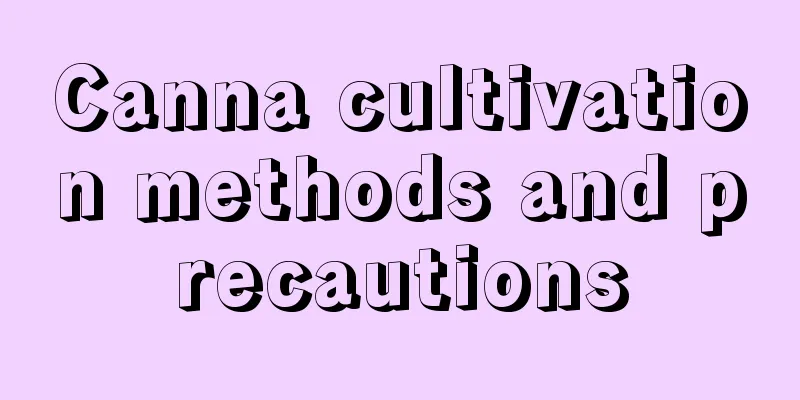Canna cultivation methods and precautions

1. Breeding methodsilluminationCanna is best grown in full sunlight. If the environment is too dark and there is insufficient light, the flowering period will be delayed. If you place it in a cool place while it's blooming, you can extend its flowering period. temperatureThe suitable growth temperature of canna is 15℃-30℃. When it blooms, placing canna in a low temperature and light-free place can prolong the flowering period. The ambient temperature cannot be lower than 10℃. When the temperature is above 40℃, canna can be moved to a ventilated and cool place. Before and after the Frost Descent, the potted cannas can be moved to a place with a temperature of 5-10℃ so that they can safely overwinter. WateringDuring the growing season, canna needs to be sprayed with water 1-2 times a day to maintain humidity. Since cannas like fertilizer and are tolerant to moisture, the pot must be watered thoroughly and the frequency of watering should be controlled according to the actual situation. FertilizationApply sufficient base fertilizer before planting. In addition, top dressing should be done 3-4 times a month during the peak growth period. soilCanna does not have high requirements for soil, but it grows best in loose, fertile, well-drained sandy loam, and fertile clay soil is also acceptable. 2. PrecautionsEnsure lightingCanna requires sufficient light during the growing period, ensuring that it receives at least 5 hours of direct sunlight every day. Pay attention to controlling the amount of fertilizerPotted cannas sometimes have scorched and yellowed leaf edges, mainly due to excessive application of ferrous sulfate. If too much fertilizer is applied during the hottest summer months, it will burn the rhizomes of the canna and "burn them to death." Stop fertilizing cannas during their flowering period and over the winter. Avoid excessive cooling when watering in summerIn the hot summer, if the water temperature is too cold, it will cause the leaf edges to burn. Prune after the flowers have fallenWhen the flowers at the end of the stem fall, the stem should be cut off from the base at any time to allow new buds to sprout and flower branches to grow and bloom. |
<<: How to distinguish between delphinium and delphinium
Recommend
Dried flower production
1. Cutting time In order to ensure better quality...
How to grow hydroponics to make it bloom
Hydroponics for smooth flowering The hydroponic S...
Cultivation methods and precautions of Globe amaranth
1. Lighting It likes light, so it needs to be pla...
How to grow peppers and the price of peppers
1. How to plant 1. Prepare the soil: Before plant...
The easiest flower-growing technique ever! Learn it in 10 seconds, Jasmine is long-lived...it will never die no matter how you keep it!
Tips for caring for longevity flowers Maintenance...
Is the yield of honey plum high? What is the yield per mu?
Does honey plum have high yield? The yield of hon...
What flowers are suitable for growing in Hegang? What are the city flowers and trees?
1. Climate characteristics of Hegang Hegang has a...
Is the Verbena serrata poisonous?
1. Is it toxic? Many people want to know whether ...
How many small-leaf gardenias can be planted in one pot? Pictures of small-leaf gardenias in pots
1. How many small-leaf gardenias should be plante...
How to cultivate golden lotus leaf
1. Flower soil The golden lotus leaf likes to gro...
How to save asparagus fern from yellowing roots and stems, and what to do if branches and leaves turn yellow
1. How to save the yellowing of roots and stems T...
What is the best month to plant beans without frames?
When to plant beans without frames Frameless bean...
When and how to plant tulips
Tulip Planting Time Tulips are usually planted in...
How to root the newly bought lucky bamboo
1. Growth habits If you want to help it take root...
How many years does the Splendid Begonia bear fruit?
The fruit of the splendid crabapple has been plan...









